In food documentaries, we can always see that some traditional food has achieved innovation in taste through improved production technology, thus glowing with new vitality. Such examples are common on mobile phone chips. Even for chips with the same specifications and parameters, as long as the manufacturing process changes, the performance and power consumption will be different. More advanced manufacturing processes can often add a lot to the original chips.
In that case, has the Xiaolong 8 + Gen 1 "temper" improved with the new TSMC 4nm process? Its predecessor promoted the progress and prosperity of mobile phone cooling technology on his own.
We just received the first batch of Rog engineering prototype equipped with Qualcomm Xiaolong 8 + GEN1 at the first time. Let's talk about its actual performance.

High dominant frequency + new technology
As an upgraded version of Xiaolong 8 Gen 1, the specifications of Xiaolong 8 + Gen 1 are basically consistent with Xiaolong 8 Gen 1. They are all "1 + 3 + 4" three cluster architecture, which are composed of super core cortex X2, large core cortex a710 and small core cortex A510.
There are two main differences between Xiaolong 8 + Gen 1: one is the core frequency, the other is the manufacturing process.
On the super large core cortex X2, the frequency of Xiaolong 8 + Gen 1 is 3.2ghz, which is 0.2ghz higher than that of Xiaolong 8 Gen 1. Moreover, the frequency of Xiaolong 8 + Gen 1's small core cortex A510 is also 0.2ghz higher than that of Xiaolong 8 Gen 1, reaching 2.0GHz. Higher core frequencies often bring stronger performance, so its improvement in CPU performance is particularly obvious.
In fact, before we got the engineering prototype, we were worried that Xiaolong 8 + Gen 1 would really lower the core frequency for power consumption, as rumored. Now it seems that the reason why Xiaolong 8 + Gen 1 can improve many core frequencies must be due to the TSMC 4nm process it uses.
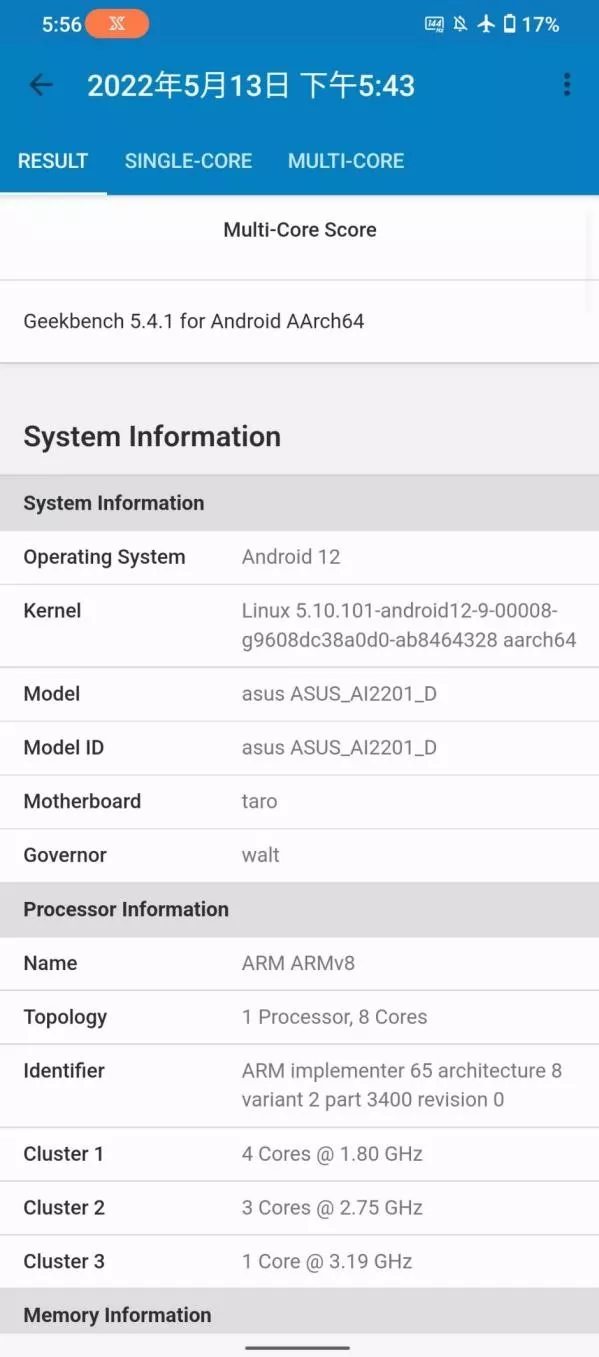
(the frequency of small nucleus should be 2.0GHz, and the chart shows a bug)
Although the name is also 4nm, there is a big difference between Samsung 4nm and TSMC 4nm. Samsung 4nm is based on the improvement of Samsung 7Nm, while TSMC 4nm is an improved version of TSMC 5nm. From this point of view alone, TSMC 4nm is a generation and a half ahead of Samsung 4nm.
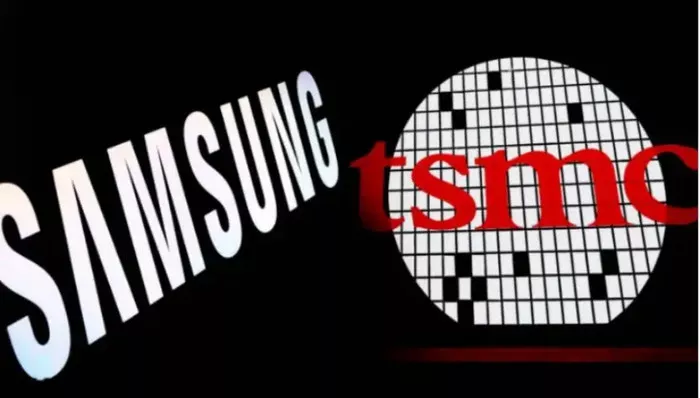
Map source network
Let's look at the transistor density. The density of Samsung 4nm process is 145.8mtr/mm. This level is only better than TSMC 7Nm a few years ago, not as good as TSMC 5nm 171.3mtr/mm. Compared with the latest TSMC 4nm density level of 178.4mtr/mm, it is an obvious gap. Higher transistor density can plug more transistors in the same size, resulting in stronger performance and better power consumption.
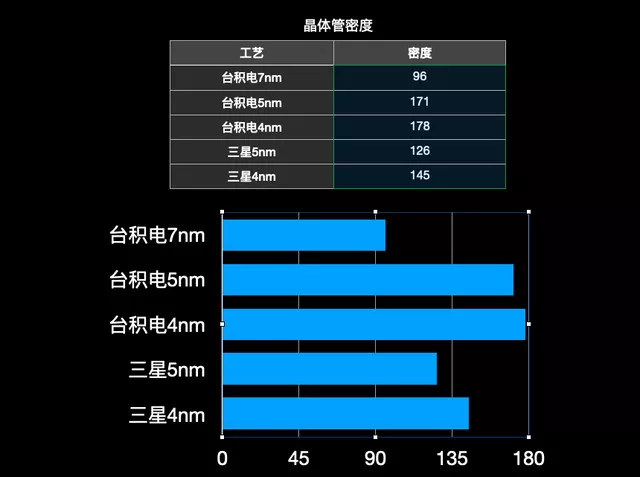
Map source network
Starting from Xiaolong 855 plus, Qualcomm will launch the plus version of Xiaolong 8 series processor in the second half of each year. These plus versions often only increase the frequency. This time, Xiaolong 8 + Gen 1 has increased the frequency and replaced with more advanced manufacturing technology, which makes it an unprecedented increase compared with the previous plus version.
With so many paper parameters, what is the actual performance of Xiaolong 8 + Gen 1? After finishing the running points and game tests, its results can be said to surprise us.
Plus edition with the greatest performance improvement in history
The first is the popular Ann rabbit, which reflects the comprehensive performance of a mobile phone, including CPU, GPU and memory & amp; Storage system and other aspects. Previously, I have used many mobile phones equipped with Xiaolong 8 Gen 1 to run an rabbit. Although they said that they ran more than one million points at the press conference, when they actually got the test, they hovered more than one million points ago.
In contrast, the Rog engineering prototype equipped with Xiaolong 8 + GEN1 is much more "fierce". It does not need harsh conditions. At the room temperature of 26 degrees, the running score of anrabbit can easily reach 1.11 million, of which its CPU score is 267273, GPU score is 464585 and memory & amp; The stored score is 195988.
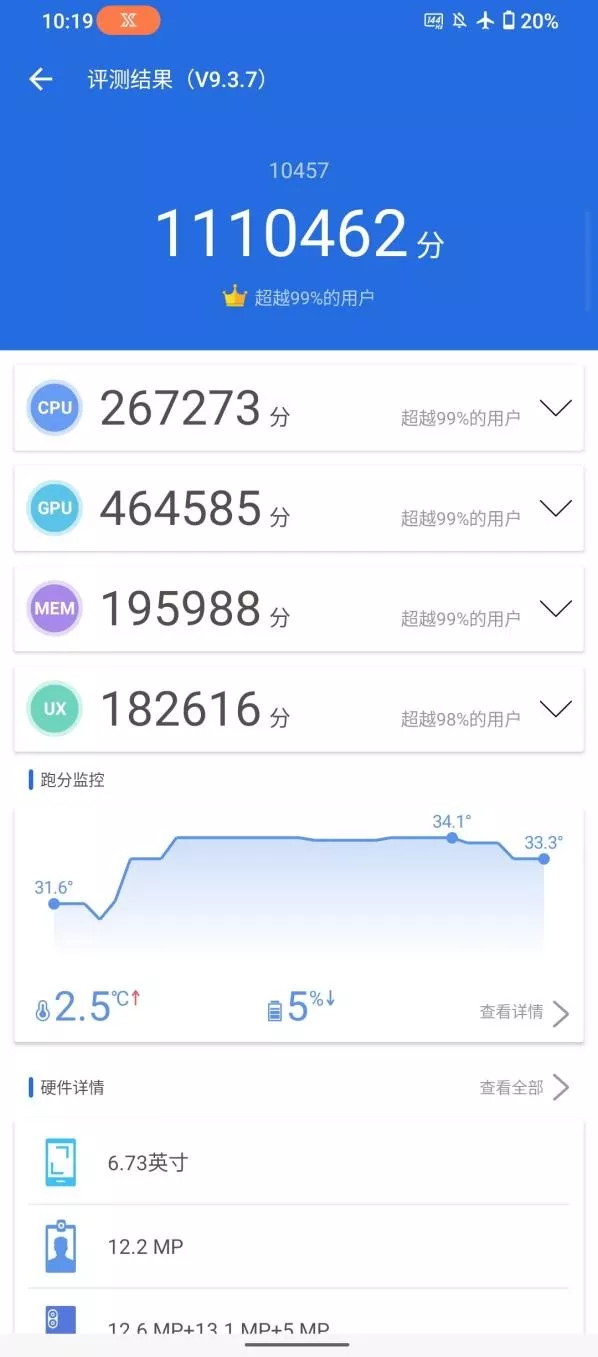
According to the scores of Android rabbit, it is at the top level of the Android camp in all aspects, especially the GPU part, which is the only file in the Android camp.
However, what attracts my attention most is its CPU score. Compared with the common score of 230000 + of Xiaolong 8 Gen 1, its score is about 30000 higher. Has its CPU performance really improved a lot this time? This guess was confirmed in the following geekbench 5 test.
Geekbench 5 is a scoring software that can directly reflect the CPU performance of the processor. The scores tested by Xiaolong 8 + Gen 1 are exciting. Its single core score is 1320, while the multi-core score is as high as 4237. Compared with the scores of Xiaolong 8 Gen 1, which generally has single core 1200 + and multi-core 3700 +, Xiaolong 8 + Gen 1 with higher frequency is significantly ahead.
In the first half of the year, the "hot discussion" of many netizens about Xiaolong 8 Gen 1 was CPU performance in addition to power consumption. After all, competitive products with the same architecture have more advantages in this regard. Fortunately, Xiaolong 8 + Gen 1, which has increased the frequency, can finally return to one city. When its multi-core performance is similar, its CPU single core performance is slightly better than that of competitive products.
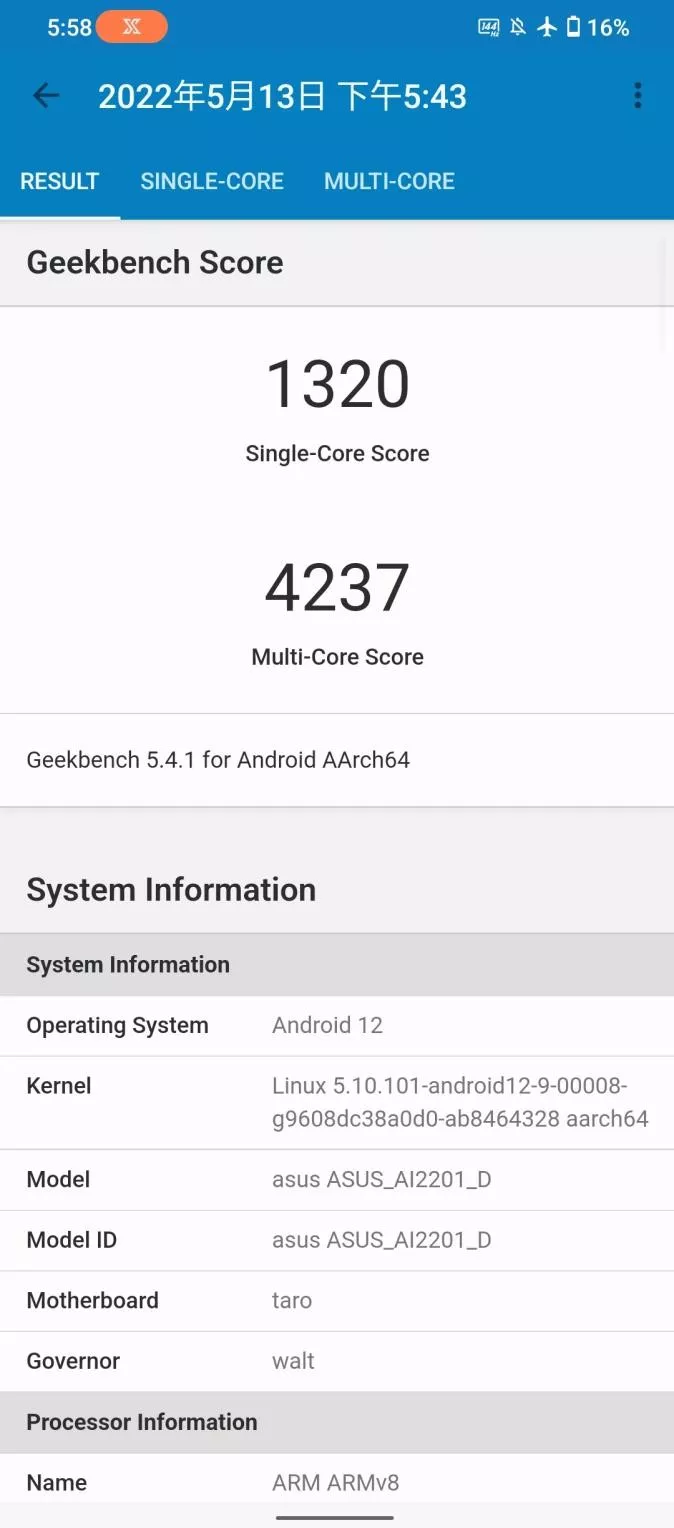
Since the CPU improvement is not small, will its GPU performance also be a surprise? Therefore, we tested with 3D mark. In the extremely stressful wild life extreme stress test, its best cycle score reached 2785 points and the stability was 69.1%. Compared with the 2400 + best cycle score and 66% stability of Xiaolong 8 Gen 1, the progress is equally gratifying.
In addition, in the wild life test with lower pressure, Xiaolong 8 + Gen 1 can easily achieve a good score of 10275, with an average frame rate of 61.5 frames.
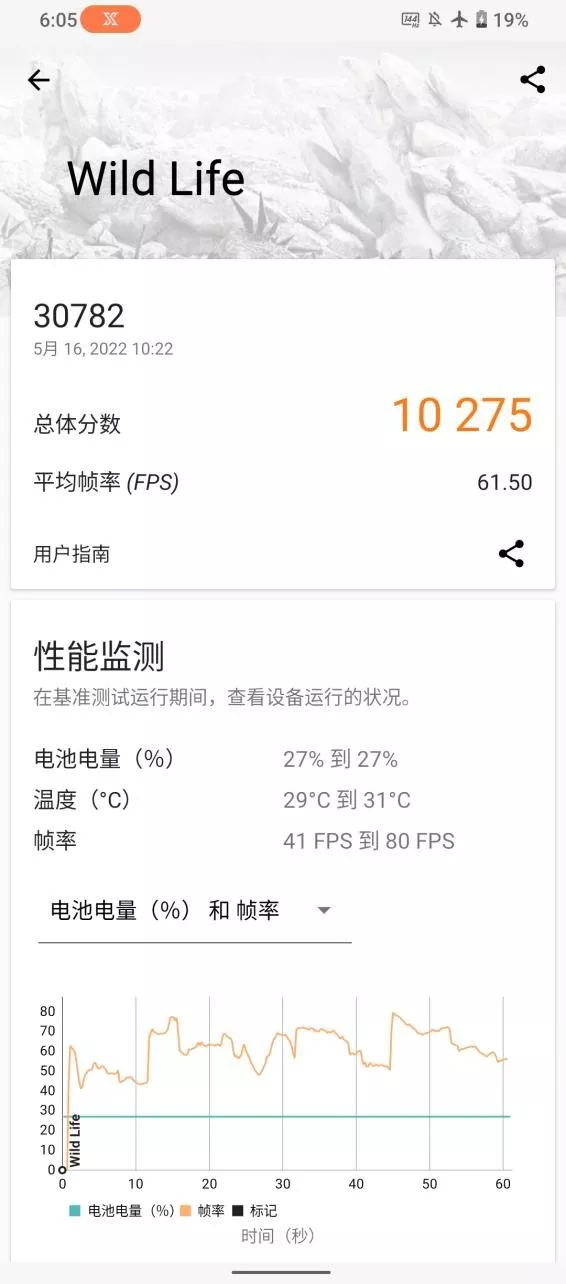
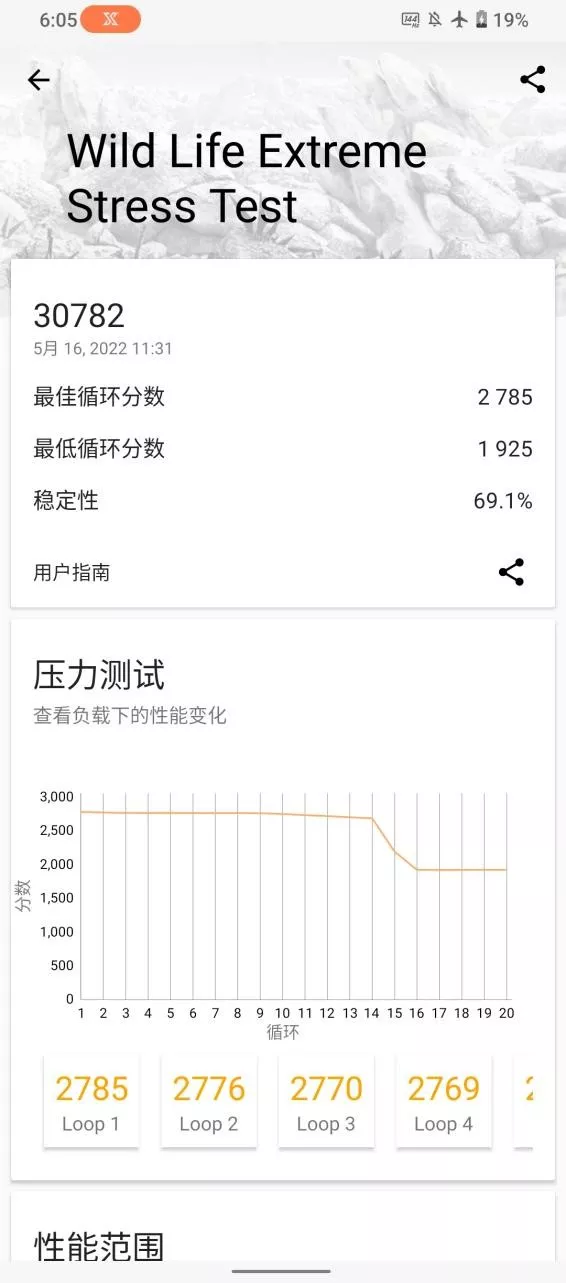
Powerful performance to realize "original God freedom"
Just looking at the running score data is not enough, because the running score is good-looking, and the crotch pulling of the game is not uncommon, so we also tested the game with the Rog prototype equipped with Xiaolong 8 + Gen 1, and the result of this time is no surprise.
We selected the three most popular mobile games for the test. The test was conducted under the condition that the room temperature was 26 degrees and the balance mode was turned on. Under the setting of King glory's extremely high frame rate + ultra-high resolution, the Rog prototype equipped with Xiaolong 8 + Gen 1 had a stable frame rate as a straight line in the half-hour test. The whole process was almost close to the highest frame rate. The average frame rate reached 119 frames, and there was no frame jamming. The game experience was excellent.
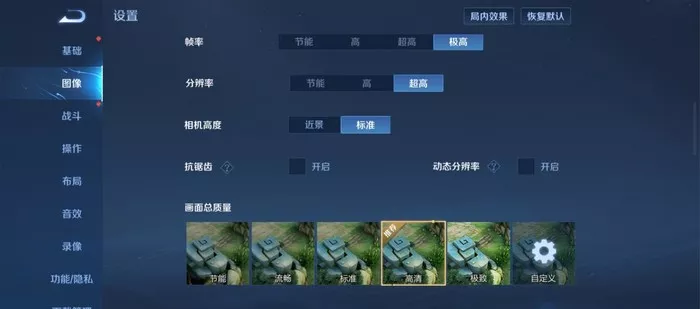
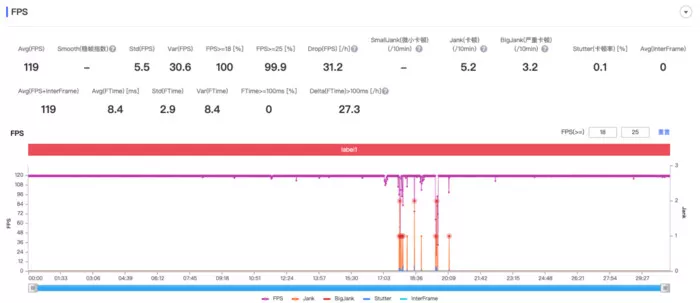
It should be noted that originally, among the peace elite, we also wanted to use its high frame rate mode for testing. Unfortunately, at present, this Rog prototype has not been adapted, so we can only use the HDR HD + limit frame rate mode with the same pressure for testing.
In the half-hour peace elite HDR HD + ultimate frame rate test, the Rog prototype equipped with Xiaolong 8 + Gen 1 showed amazing stability. Its frame rate curve was even straighter than the king's glory in front, with an average frame rate of 59.8 frames. Even in the later stage of the test, it did not show heating and frequency reduction. With such a powerful performance guarantee, I finally "ate chicken" smoothly.
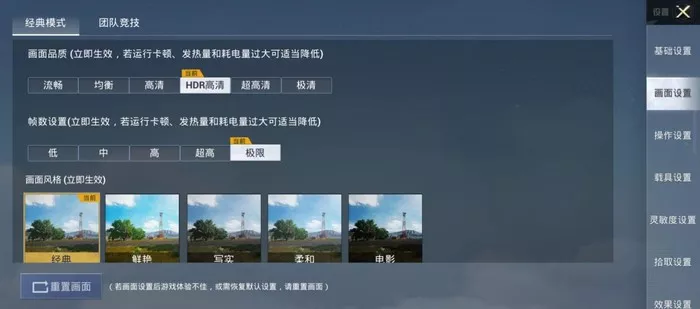
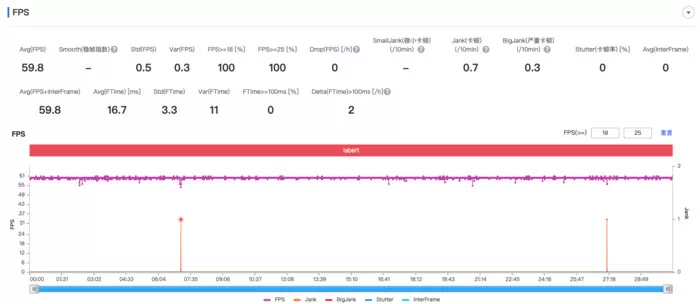
The original God mobile game has always been the ultimate "nightmare" of mobile phone manufacturers. Its highest image quality has not been completely conquered by a mobile phone processor, but now the emergence of Xiaolong 8 + Gen 1 has brought this goal a step closer.
In the first half of the year, most Xiaolong 8 Gen 1 models ran with the highest image quality. The original gods were afraid of their heads and feet. Limited by power consumption and temperature, even if a few models were free to run, the frame rate would rise and fall behind like a roller coaster. However, Xiaolong 8 + Gen 1 with new manufacturing technology did not have this problem.
The Rog prototype equipped with Xiaolong 8 + Gen 1 is extremely calm in the original God with the highest image quality in half an hour. Its average frame rate is as high as an amazing 58.8 frames. It can run smoothly in the game, and the frame rate fluctuates only when it plays strange fiercely. It is inevitable that under such a high load, it will still have frequent small fluctuations after 20 minutes of the game.
It is worth mentioning that after experiencing the "ravaging" of the original God with the highest image quality for half an hour, the body temperature of Rog engineering machine can still be maintained in a relatively pleasant range. It seems that this is one of the manifestations of the bonus of advanced process. This time, Xiaolong 8 + Gen 1 may really take off the hat of "Yanlong".
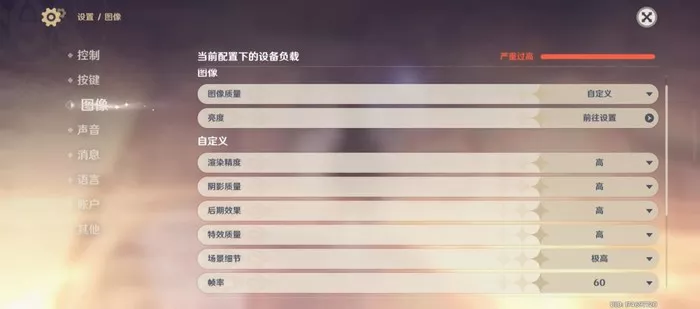
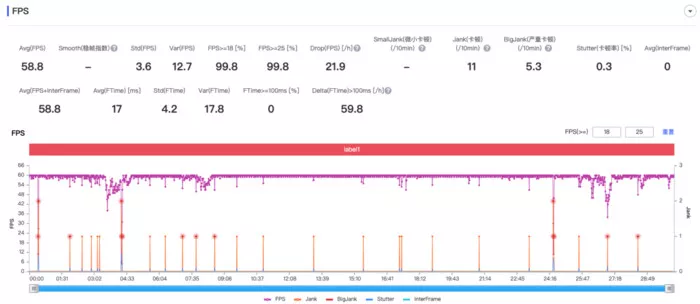
To be honest, it's the first time for me to have such a smooth experience under the original God with the highest image quality. This is especially rare in the Android camp. If we make more efforts to optimize after listing, maybe "original God freedom" is just around the corner.
At the end, I wonder if you are satisfied with the new Xiaolong 8 + Gen 1 in front of the screen?
In fact, like most people, I didn't have much hope at the beginning. Therefore, Xiaolong 8 + Gen 1 really exceeded expectations. The higher frequency and more advanced TSMC 4nm technology made its CPU and GPU performance not only improve in single digits, but also become the plus version with the largest improvement in the history of Xiaolong 8 series. It can be said that this is the level that should be the top flagship processor of Qualcomm.
The Xiaolong 8 series we are familiar with is finally back.